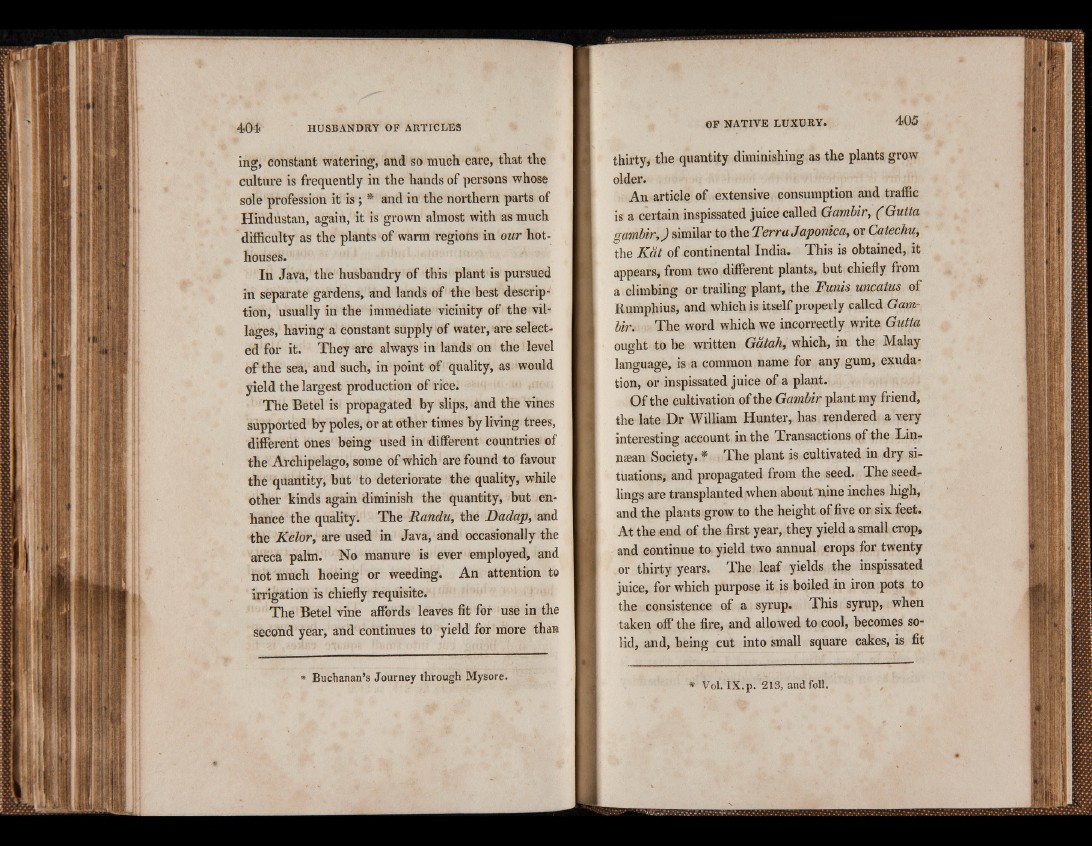
4 0 4 5 HU SBAN DR Y OF ARTICLES
ing, constant watering, and so much care, that the
culture is frequently in the hands of persons whose
sole profession it is ; * and in the northern parts of
Hindustan, again, it is grown almost with as much
difficulty as the plants of warm regions in our hothouses.
In Java, the husbandry of this plant is pursued
in separate gardens, and lands of the best description,
usually in the immediate vicinity of the villages,
having a constant supply of water, are selected
for it. They are always in lands on the level
of the sea, and such, in point of quality, as would
yield the largest production of rice.
The Betel is propagated by slips, and the vines
supported by poles, or at other times by living trees,
different ones being used in different countries of
the Archipelago, some of which are found to favour
the quantity, but to deteriorate the quality, while
other kinds again diminish the quantity, but enhance
the quality. The Randu, the Dadap, and
the Kelor, are used in Java, and occasionally the
areca palm. No manure is ever employed, and
not much hoeing or weeding. An attention to
irrigation is chiefly requisite.
The Betel vine affords leaves fit for use in the
second year, and continues to yield for more than
* Buchanan’s Journey through Mysore.
OF N A T IV E L U X U R Y .
thirty, the quantity diminishing as the plants grow
older.
An article of extensive consumption and traffic
is a certain inspissated juice called Gambir, ( Guita
gambir,) similar to the Terra Japónica, or Catechu,
the Kdt of continental India. This is obtained, it
appears, from two different plants, but chiefly from
a climbing or trailing plant, the Funis uncaius of
Rumphius, and which is itself properly called Gambir.
The word which we incorrectly write Gutta
ought to be written Gatah, which, in the Malay
language, is a common name for any gum, exudation,
or inspissated juice of a plant.
Of the cultivation of the Gambir plant my friend,
the late Dr William Hunter, has rendered a very
interesting account in the Transactions of the Lin-
naean Society. * The plant is cultivated in dry situations,
and propagated from the seed. The seedlings
are transplanted when about nine inches high,
and the plants grow to the height of five or six feet.
At the end of the first year, they yield a small crop,
and continue to yield two annual crops for twenty
or thirty years. The leaf yields the inspissated
juice, for which purpose it is boiled in iron pots to
the consistence of a syrup. This syrup, when
taken off the fire, and allowed to cool, becomes solid,
and, being cut into small square cakes, is fit
* Vol. IX. p. 213, and foil.